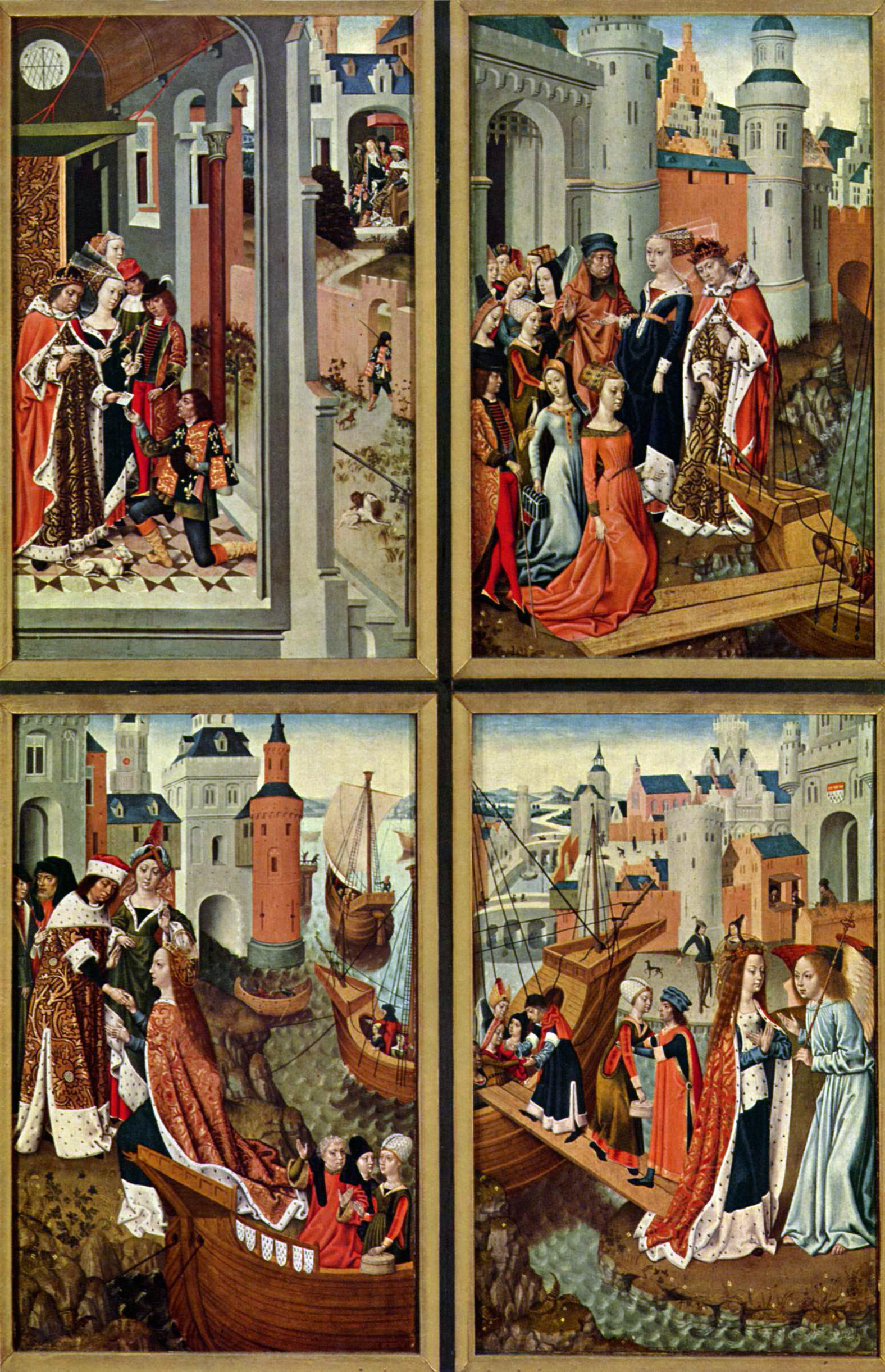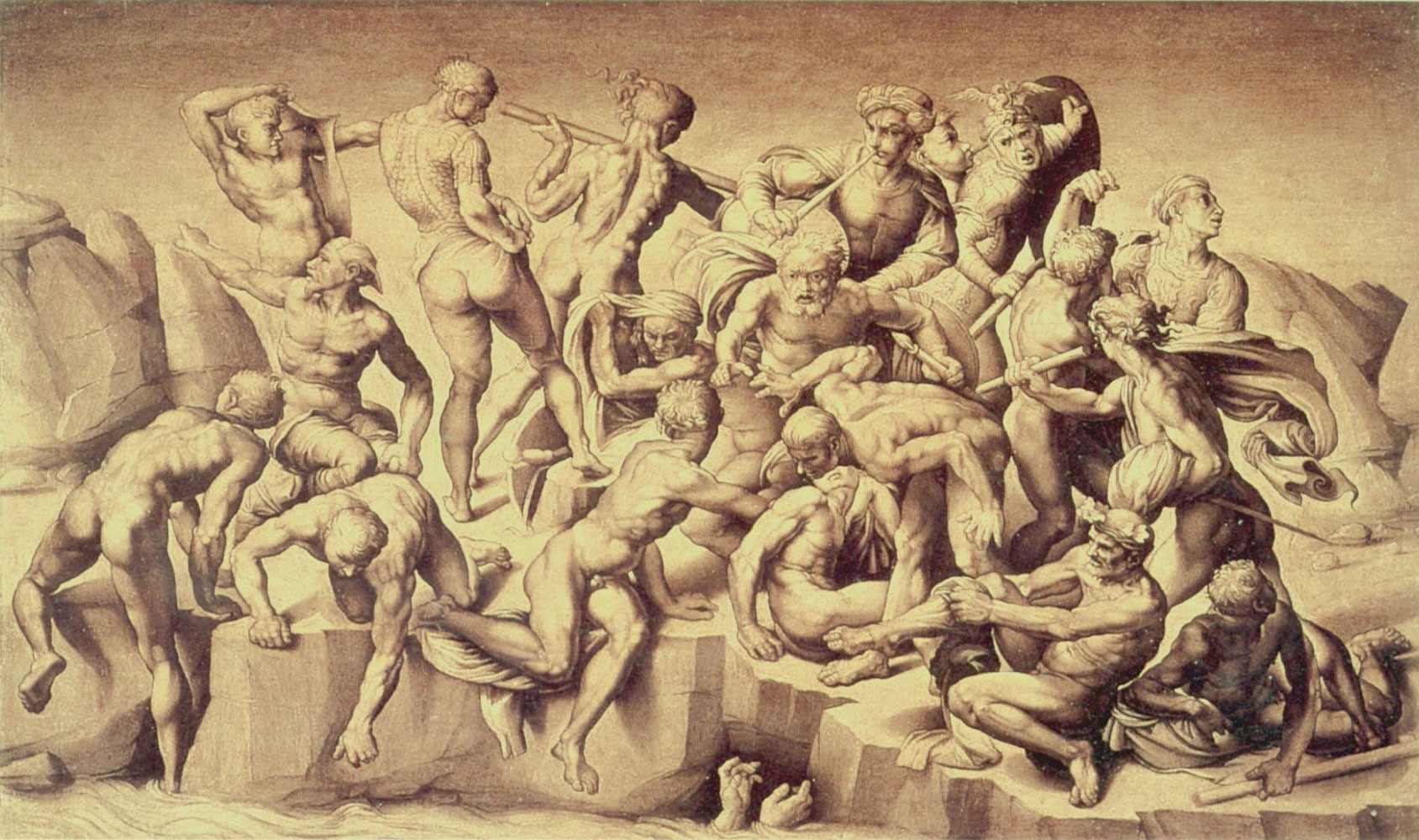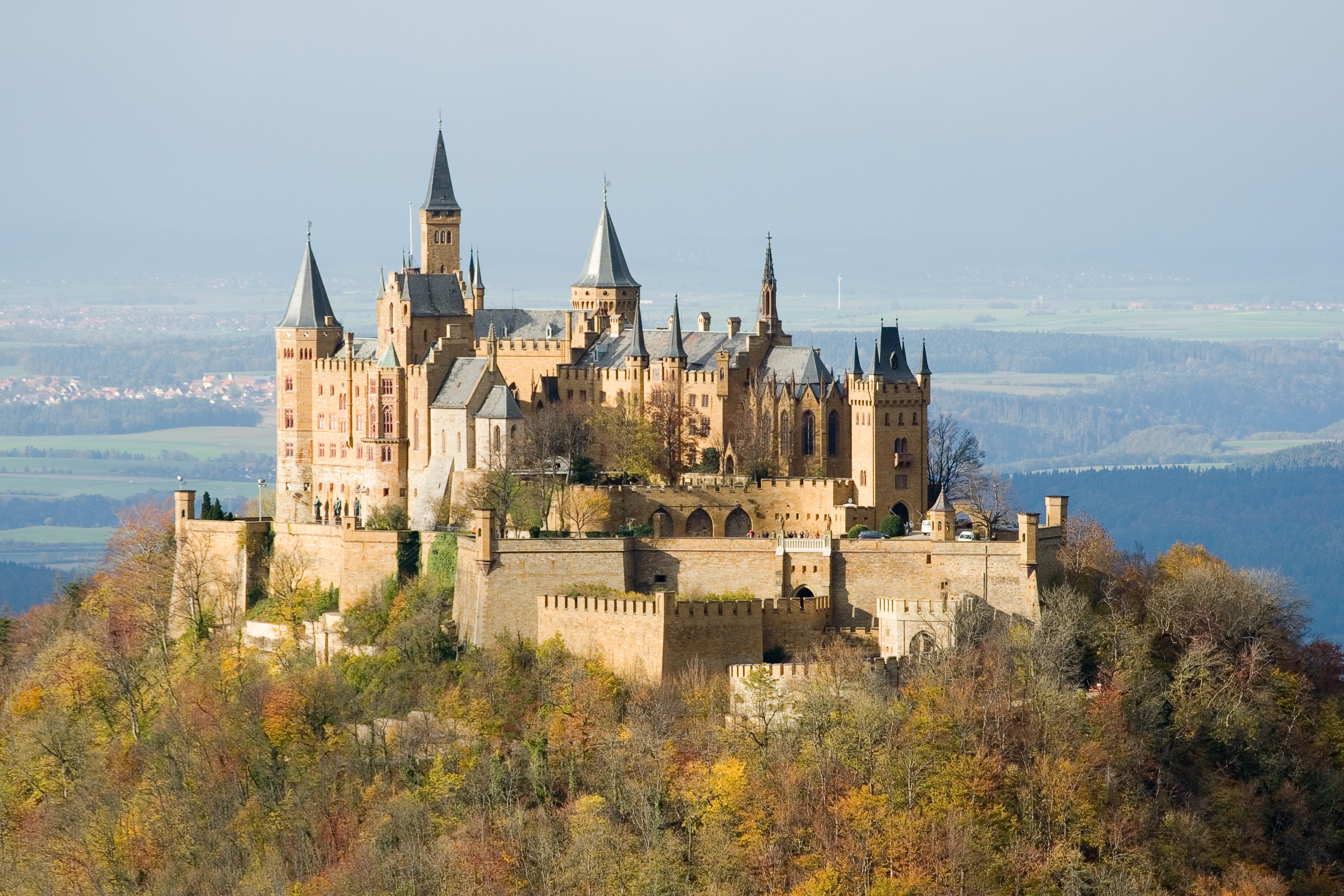|
Master Of Meßkirch
The Master of Meßkirch (; ) was an anonymous German Renaissance painter. Biography The so-called Master of Meßkirch is named after the eleven altarpieces (one main altarpiece and ten auxiliary ones) he painted for the St. Martin church in Meßkirch between 1536 and 1540. His birthplace and apprenticeship are unknown, but he may have studied under an artist from the circle of Albrecht Dürer, such as Hans von Kulmbach or Hans Leonhard Schäufelein.Gert von der Osten, Horst Vey (1969). ''Painting and Sculpture in Germany and the Netherlands, 1500 to 1600''. Penguin Group, . Pages 217-18 From the 1530s onwards his works seem to display familiarity with contemporary northern Italian painting. Hans Baldung Grien was also influential to his work. Early on he worked for Count Eitel Friedrich III of Hohenzollern in Veringenstadt Veringenstadt ( Swabian: ''Verenga'') is a town in the district of Sigmaringen, in Baden-Württemberg, Germany. It is situated 10 km north of S ... [...More Info...] [...Related Items...] OR: [Wikipedia] [Google] [Baidu] |
Meister Von Meßkirch Dreikönigsbild
''Meister'' () means 'master' in German (as in master craftsman, or as an honorific title such as Meister Eckhart). The word is akin to master and maestro. In sports, ''Meister'' is used for the current national, European or world champion (e.g. ''Deutscher Meister'', ''Europameister'', ''Weltmeister''). ''Meister'', in compositions such as ''Polizeimeister'' or ''Wachtmeister'', has a tradition in the ranks of various German police forces, partially also in Switzerland. During the Second World War, ''Meister'' was the highest enlisted rank of the German ''Ordnungspolizei''. In professional life, ''Meister'' usually refers to a higher degree in vocational education. ''Meister'' has been borrowed into English slang, where it is used in compound nouns. A person referred to as “Meister” is one who has extensive theoretical knowledge and practical skills in his profession, business, or some other kind of work or activity. For example, a “puzzle-meister” would be someone ... [...More Info...] [...Related Items...] OR: [Wikipedia] [Google] [Baidu] |
Eitel Friedrich III, Count Of Hohenzollern
Eitel Friedrich III, Count of Hohenzollern (1494 – 15 January 1525 in Pavia) was Count of County of Hohenzollern from 1512 until his death. Life Eitel Friedrich was a son of Count Eitel Friedrich II (1452–1512) from his marriage to Magdalena (1460 -1496), the daughter of Margrave Friedrich of Altmark. Eitel Friedrich succeeded his father as Count of Hohenzollern in 1512. In 1515, he married Johanna of Witthem (d. 1544), the daughter of Philip, Lord of Beersel and Boutersem. Eitel Friedrich III was top councillor and great chamberlain to Emperor Maximilian I, which demonstrates that he, like his father before him, had excellent relations with the Habsburgs. He was also Imperial Archchamberlain and captain of the Lordship of Hohenberg. He died in Pavia in 1525; he may have been poisoned. He was in Pavia to serve as captain of the Landsknecht regiment. He was buried in the Basilica of San Pietro in Ciel d'Oro of Pavia. Issue His marriage Eitel Friedrich ... [...More Info...] [...Related Items...] OR: [Wikipedia] [Google] [Baidu] |
1500s Deaths
Fifteen or 15 may refer to: *15 (number) *one of the years 15 BC, AD 15, 1915, 2015 Music * Fifteen (band), a punk rock band Albums * ''15'' (Buckcherry album), 2005 * ''15'' (Ani Lorak album), 2007 * ''15'' (Phatfish album), 2008 * ''15'' (Tuki album), 2025 * ''15'' (mixtape), a 2018 mixtape by Bhad Bhabie * ''Fifteen'' (Green River Ordinance album), 2016 * ''Fifteen'' (The Wailin' Jennys album), 2017 * ''Fifteen'', a 2012 album by Colin James Songs * "Fifteen" (song), a 2008 song by Taylor Swift *"Fifteen", a song by Harry Belafonte from the album '' Love Is a Gentle Thing'' *"15", a song by Rilo Kiley from the album ''Under the Blacklight'' *"15", a song by Marilyn Manson from the album ''The High End of Low'' Other media * ''15'' (film), a 2003 Singaporean film * ''Fifteen'' (TV series), international release name of ''Hillside'', a Canadian-American teen drama * "Fifteen" (''Runaways''), an episode of ''Runaways'' *Fifteen (novel), a 1956 juvenile fic ... [...More Info...] [...Related Items...] OR: [Wikipedia] [Google] [Baidu] |
Anonymous Artists
In art history, an Notname, anonymous master is an Old Master whose work is known, but whose name is lost. Renaissance Only in the Renaissance did individual artists in Western Europe acquire personalities known by their peers (some listed by Vasari in his ''Lives of the Artists''), such as those known by: * Their true name or their father's name: ** Filippino Lippi after his father Fra Filippo Lippi * A chosen pseudonym, possibly linked to his birthplace or his father's trade: ** Giuliano da Sangallo worked on the gate of Saint Gall ** Antonio del Pollaiuolo, after his father, a chicken farmer (pollo in Italian) ** Jacopo del Sellaio, after his father, a saddler (''sellier'') ** The Della Robbias (after the Tuscan word ''robbia'', dyers' Rubia tinctorum, madder, and his father, the dyer Luca della Robbia) ** Masuccio Segondo, student of Masuccio Primo ** etc. * A surname attributed to him: ** Simone del Pollaiolo, Il Cronaca, who never stopped talking about the ruins he had seen in ... [...More Info...] [...Related Items...] OR: [Wikipedia] [Google] [Baidu] |
German Renaissance Painters
German(s) may refer to: * Germany, the country of the Germans and German things ** Germania (Roman era) * Germans, citizens of Germany, people of German ancestry, or native speakers of the German language ** For citizenship in Germany, see also German nationality law **Germanic peoples (Roman era) * German diaspora * German language * German cuisine, traditional foods of Germany People * German (given name) * German (surname) * Germán, a Spanish name Places * German (parish), Isle of Man * German, Albania, or Gërmej * German, Bulgaria * German, Iran * German, North Macedonia * German, New York, U.S. * Agios Germanos, Greece Other uses * German (mythology), a South Slavic mythological being * Germans (band), a Canadian rock band * "German" (song), a 2019 song by No Money Enterprise * ''The German'', a 2008 short film * "The Germans", an episode of ''Fawlty Towers'' * ''The German'', a nickname for Congolese rebel André Kisase Ngandu See also * Germanic (d ... [...More Info...] [...Related Items...] OR: [Wikipedia] [Google] [Baidu] |
Mannerism
Mannerism is a style in European art that emerged in the later years of the Italian High Renaissance around 1520, spreading by about 1530 and lasting until about the end of the 16th century in Italy, when the Baroque style largely replaced it. Northern Mannerism continued into the early 17th century. Mannerism encompasses a variety of approaches influenced by, and reacting to, the harmonious ideals associated with artists such as Leonardo da Vinci, Raphael, Vasari, and early Michelangelo. Where High Renaissance art emphasizes proportion, balance, and ideal beauty, Mannerism exaggerates such qualities, often resulting in compositions that are asymmetrical or unnaturally elegant. Notable for its artificial (as opposed to naturalistic) qualities, this artistic style privileges compositional tension and instability rather than the balance and clarity of earlier Renaissance painting. Mannerism in literature and music is notable for its highly florid style and intellectual sophist ... [...More Info...] [...Related Items...] OR: [Wikipedia] [Google] [Baidu] |
Gottfried Werner Von Zimmern
The von Zimmern family ('' Herren von Zimmern''), after 1538 counts (''Grafen'') of Zimmern, was a Swabian noble family. The family is first mentioned in 1080, and its male line was extinct in 1594. Their name is now mostly known from the Zimmern Chronicle, written in the mid 16th century by count Froben Christoph von Zimmern. Their original domain was in the Black Forest, in part of the modern Rottweil district. Their original castle was Herrenzimmern near Bösingen (ruined since the 17th century). In 1415, the von Zimmern acquired Wildenstein Castle. In 1488, the escalation of the Werdenberg feud, Johannes Werner the elder fell under imperial ban and most of the von Zimmern possessions was given to the Werdenberger lords of Sigmaringen; the possessions were eventually regained, by Johannes Werners's son, Johannes Werner the younger, in 1503. In 1508, the von Zimmern possessions were divided into three parts. The family reached the peak of its influence in 1538, when the ... [...More Info...] [...Related Items...] OR: [Wikipedia] [Google] [Baidu] |
Veringenstadt
Veringenstadt ( Swabian: ''Verenga'') is a town in the district of Sigmaringen, in Baden-Württemberg, Germany. It is situated 10 km north of Sigmaringen. Geographical location Veringenstadt is situated in the valley of the Lauchert, a tributary of the Danube, between Gammertingen and Sigmaringen. The municipality area is 3125 hectares.Ignaz Stösser (ist): ''Zahlen und Fakten.'' In: Ders.: ''Wir in Veringen.'' In: ''Schwäbische Zeitung.'' vom 15. Januar 2011. Geology The municipality Veringenstadt lies on the Lauchertgraben (Lauchert trench). East of Veringendorf a petrified sponge reef can be seen, which was created 140 million years ago.''Von Neandertalern und Bohnerzgruben.'' In: ''Wanderbar …die schönsten Routen. Erlebnis Kreis Sigmaringen.'' Landratsamt Sigmaringen, Druckerei Schönebeck, Meßkirch 2004, S. 5–7. History The area of the present municipality Veringenstadt was already settled in early historical times. The town itself is an ancient settle ... [...More Info...] [...Related Items...] OR: [Wikipedia] [Google] [Baidu] |
Hohenzollern
The House of Hohenzollern (, ; , ; ) is a formerly royal (and from 1871 to 1918, imperial) German dynasty whose members were variously princes, electors, kings and emperors of Hohenzollern, Brandenburg, Prussia, the German Empire, and Romania. The family came from the area around the town of Hechingen in Swabia during the late 11th century and took their name from Hohenzollern Castle. The first ancestors of the Hohenzollerns were mentioned in 1061. The Hohenzollern family split into two branches, the Catholic Swabian branch and the Protestant Franconian branch,''Genealogisches Handbuch des Adels, Fürstliche Häuser'' XIX. "Haus Hohenzollern". C.A. Starke Verlag, 2011, pp. 30–33. . which ruled the Burgraviate of Nuremberg and later became the Brandenburg-Prussian branch. The Swabian branch ruled the principalities of Hohenzollern-Hechingen and Hohenzollern-Sigmaringen until 1849, and also ruled Romania from 1866 to 1947. Members of the Franconian branch became Margrave of ... [...More Info...] [...Related Items...] OR: [Wikipedia] [Google] [Baidu] |
Germans
Germans (, ) are the natives or inhabitants of Germany, or sometimes more broadly any people who are of German descent or native speakers of the German language. The Basic Law for the Federal Republic of Germany, constitution of Germany, implemented in 1949 following the end of World War II, defines a German as a German nationality law, German citizen. During the 19th and much of the 20th century, discussions on German identity were dominated by concepts of a common language, culture, descent, and history.. "German identity developed through a long historical process that led, in the late 19th and early 20th centuries, to the definition of the German nation as both a community of descent (Volksgemeinschaft) and shared culture and experience. Today, the German language is the primary though not exclusive criterion of German identity." Today, the German language is widely seen as the primary, though not exclusive, criterion of German identity. Estimates on the total number of Germ ... [...More Info...] [...Related Items...] OR: [Wikipedia] [Google] [Baidu] |
Hans Baldung Grien
Hans Baldung (1484 or 1485 – September 1545), called Hans Baldung Grien, (being an early nickname, because of his predilection for the colour green), was a painter, printer, engraver, draftsman, and stained glass artist, who was considered the most gifted student of Albrecht Dürer and whose art belongs to both German Renaissance and Mannerism. Throughout his lifetime, he developed a distinctive style, full of colour, expression and imagination. His talents were varied, and he produced a great and extensive variety of work including portraits, woodcuts, drawings, tapestries, altarpieces, and stained glass, often relying on allegories and mythological motifs. Life Early life, c. 1484–1500 Hans was born in Schwäbisch Gmünd (formerly Gmünd in Germany), a small free city of the Empire, part of the East Württemberg region in former Swabia, Germany, in the year 1484 or 1485. Baldung was the son of Johann Baldung, a university-educated jurist, who held the office of lega ... [...More Info...] [...Related Items...] OR: [Wikipedia] [Google] [Baidu] |






